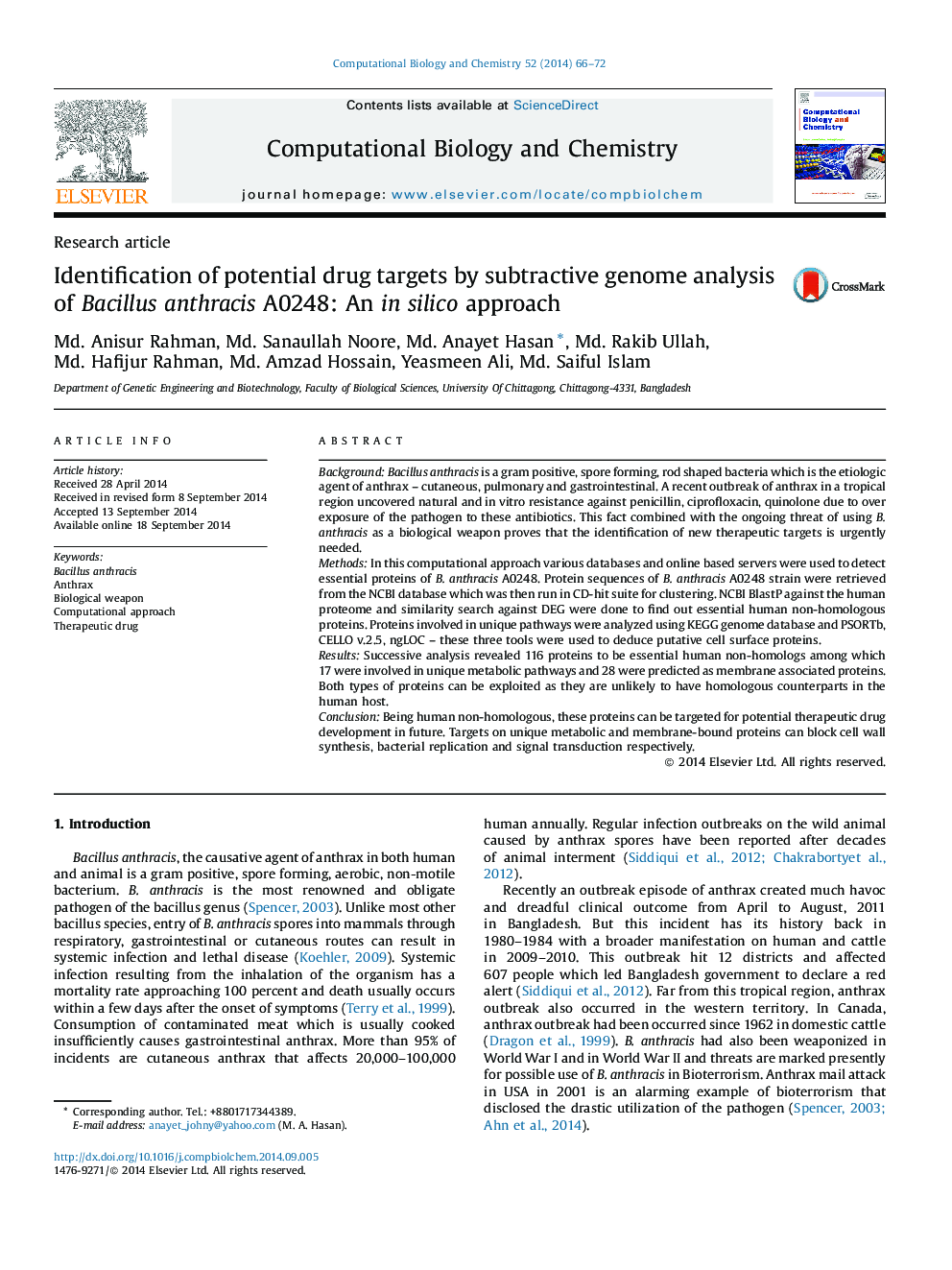| کد مقاله | کد نشریه | سال انتشار | مقاله انگلیسی | نسخه تمام متن |
|---|---|---|---|---|
| 14997 | 1366 | 2014 | 7 صفحه PDF | دانلود رایگان |

• We identified potential drug target for Bacillus anthracis A0248 strain.
• We selected non-human homolog essential proteins involved in metabolic pathways.
• PSORTb, ngLOC, and CELLO are used to predict membrane-bound proteins.
• 17 proteins in unique pathways and 28 membrane-bound proteins are identified.
• These findings from this current study will pave the way for further extensive in wet lab experiments and in that way assisting to drug design against anthrax.
BackgroundBacillus anthracis is a gram positive, spore forming, rod shaped bacteria which is the etiologic agent of anthrax – cutaneous, pulmonary and gastrointestinal. A recent outbreak of anthrax in a tropical region uncovered natural and in vitro resistance against penicillin, ciprofloxacin, quinolone due to over exposure of the pathogen to these antibiotics. This fact combined with the ongoing threat of using B. anthracis as a biological weapon proves that the identification of new therapeutic targets is urgently needed.MethodsIn this computational approach various databases and online based servers were used to detect essential proteins of B. anthracis A0248. Protein sequences of B. anthracis A0248 strain were retrieved from the NCBI database which was then run in CD-hit suite for clustering. NCBI BlastP against the human proteome and similarity search against DEG were done to find out essential human non-homologous proteins. Proteins involved in unique pathways were analyzed using KEGG genome database and PSORTb, CELLO v.2.5, ngLOC – these three tools were used to deduce putative cell surface proteins.ResultsSuccessive analysis revealed 116 proteins to be essential human non-homologs among which 17 were involved in unique metabolic pathways and 28 were predicted as membrane associated proteins. Both types of proteins can be exploited as they are unlikely to have homologous counterparts in the human host.ConclusionBeing human non-homologous, these proteins can be targeted for potential therapeutic drug development in future. Targets on unique metabolic and membrane-bound proteins can block cell wall synthesis, bacterial replication and signal transduction respectively.
Figure optionsDownload as PowerPoint slide
Journal: Computational Biology and Chemistry - Volume 52, October 2014, Pages 66–72